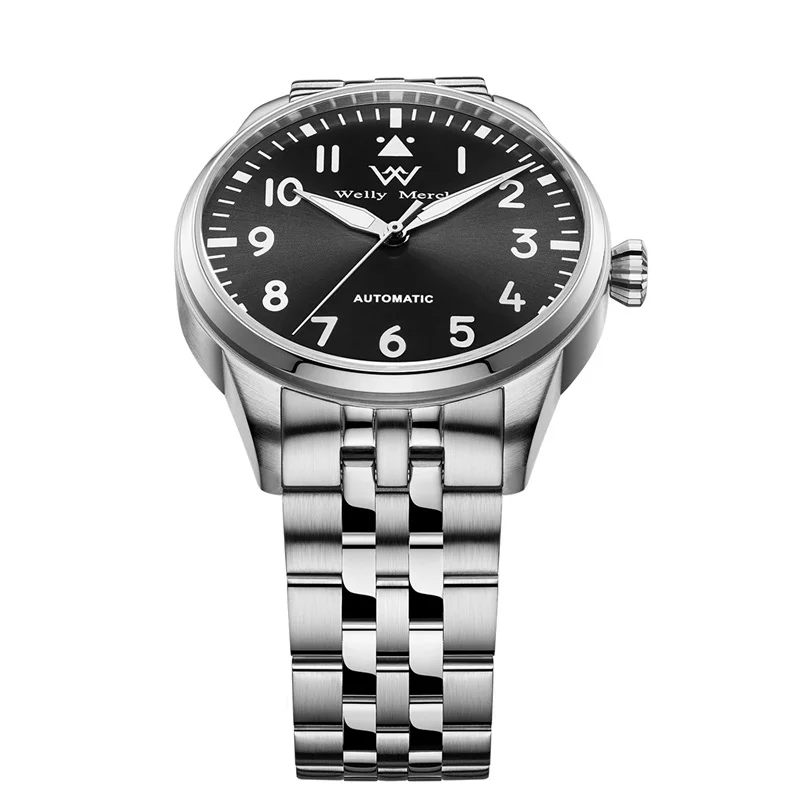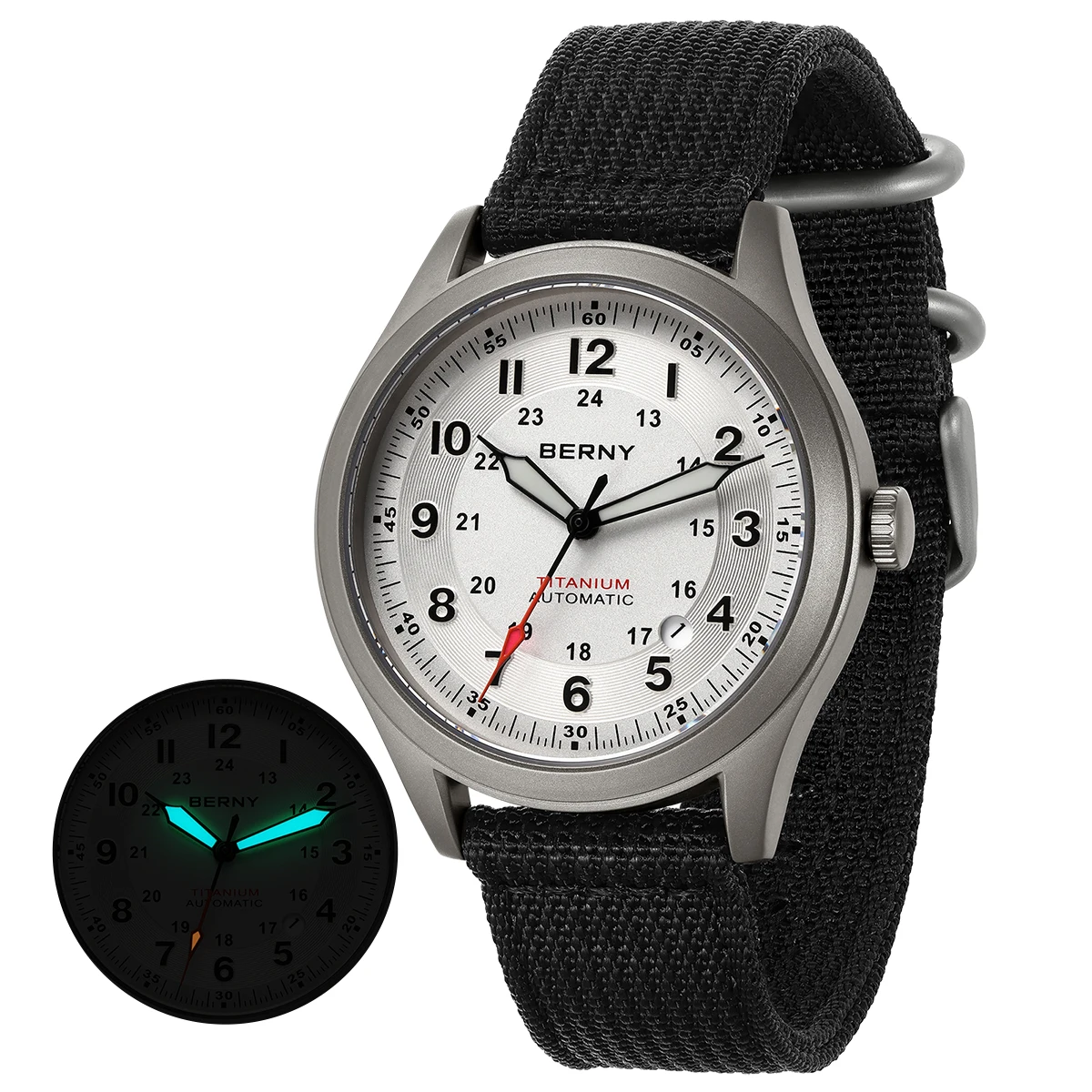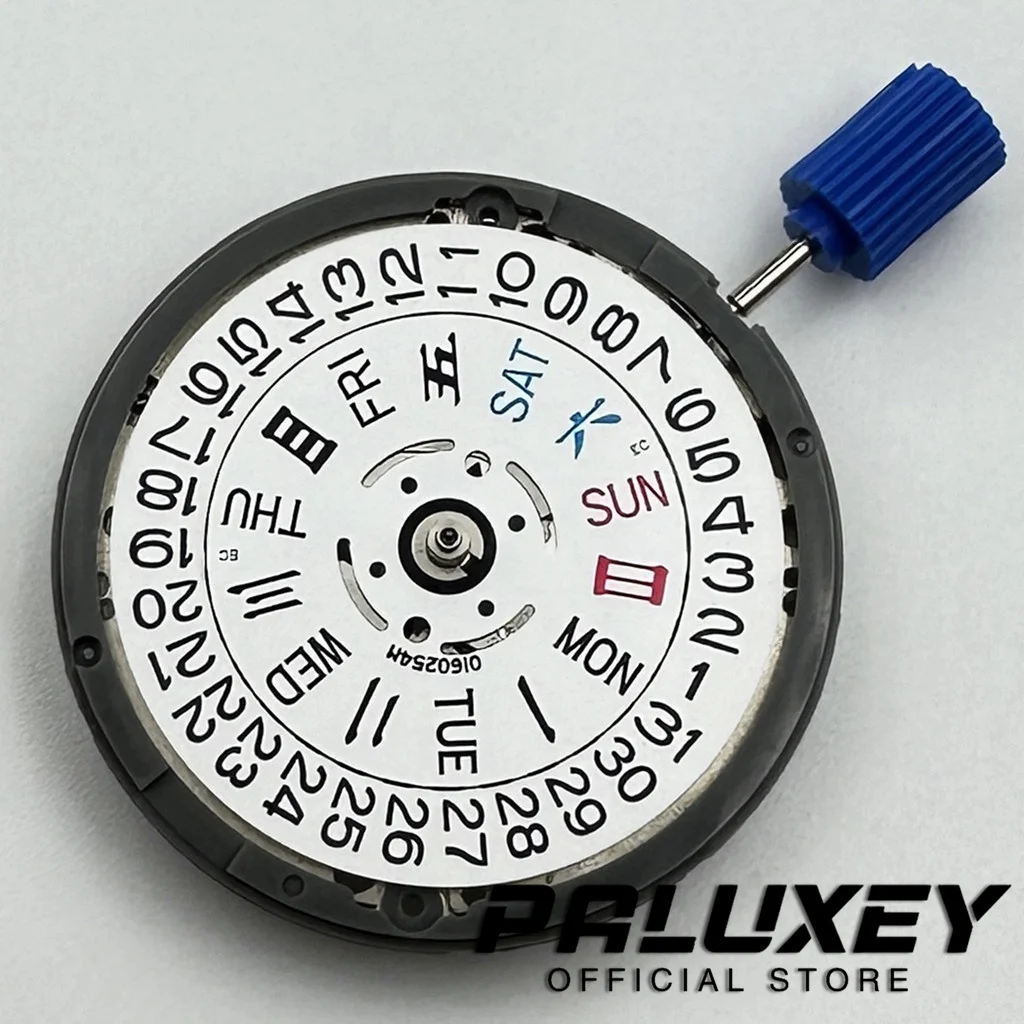Understanding the Mechanics of Day-Date Watches
Day-date watches represent a pinnacle of practical watchmaking, offering wearers not just the time, but also the current day and date at a glance. These timepieces contain intricate mechanical systems working in harmony beneath the dial, making them more complex than standard time-only watches.
Behind the simple display of day and date windows lies an impressive feat of engineering. The day-date complication requires additional gears, springs, and levers to track and display calendar information accurately. These components must work together seamlessly to advance both day and date displays at precisely midnight.
The core components involved in day-date functions typically include:
- Date wheels with 31 positions
- Day wheels with 7 positions (often in multiple languages)
- Advancing mechanisms with springs and levers
- Intermediate gears connecting to the main timekeeping train
Understanding proper setting techniques is essential because improper handling can damage these delicate components. The gears responsible for changing the date are particularly vulnerable during certain times of the day, which we’ll cover in detail later.
The historical development of watch movements has led to significant improvements in day-date mechanisms over decades, with modern watches featuring more robust and user-friendly designs. However, even contemporary timepieces require proper handling during adjustment.
The remarkable engineering behind how day-date automatic watches work serves as the foundation for everything we’ll cover in this guide. By understanding these fundamentals, you’ll be better equipped to properly care for and adjust your timepiece.
Identifying Your Watch’s Day-Date Mechanism Type
Before attempting to set your day-date watch, you must first identify which type of mechanism it contains. This knowledge directly determines the correct setting procedure and helps prevent accidental damage.
Day-date watches generally fall into three categories based on their setting mechanisms:
| Mechanism Type | Date Change Method | Day Change Method | Typical Era | Ease of Setting |
|---|---|---|---|---|
| Non-quickset | Manual time advancement | Manual time advancement | Pre-1970s | Difficult |
| Semi-quickset | Crown position | Manual time advancement | 1970s-1980s | Moderate |
| Full quickset | Crown position | Crown position | 1980s-Present | Easy |
Non-quickset mechanisms are typically found in vintage watches. With these movements, you must advance the time through multiple 24-hour cycles to change both day and date displays. This can be time-consuming but is necessary to preserve the watch’s mechanical integrity.
Semi-quickset mechanisms represent a middle ground in development. These allow you to adjust the date quickly through a specific crown position, but the day must still be advanced by cycling through 24-hour periods. Many mid-century watches feature this design.
Full quickset mechanisms offer the most convenience, with dedicated crown positions for rapidly setting both day and date independently. These are further divided into single quickset (one crown position cycles through both functions) and double quickset (separate positions for day and date).
You can usually determine your watch’s mechanism type by experimenting with different crown positions and observing the results. If pulling the crown to the first position allows date adjustment, you likely have a quickset mechanism.
Our collection of day-date automatic watches showcases various mechanism types, each requiring specific setting approaches that we’ll cover in the following sections.
Critical Safety: The “Danger Zone” and Essential Precautions
⚠️ WARNING: The “Danger Zone” ⚠️
One of the most critical aspects of setting any day-date watch is understanding and avoiding the “danger zone” – typically between 9 PM and 3 AM on the dial. During this period, the date change mechanism is already engaged and in the process of advancing the calendar displays.
Why is this dangerous? During these hours:
– Date change gears are partially engaged
– The mechanism is under tension
– Manual date adjustment can cause gear teeth to break
– Resulting damage often requires expensive professional repair
Always ensure your watch is displaying a time outside this window before attempting any date or day adjustments. A safe practice is to set the time to 6:30 (either AM or PM) before making calendar adjustments, as this positions the mechanism as far as possible from the danger zone.
Before beginning any adjustments:
1. Check your watch’s current time
2. If between 9 PM and 3 AM, ONLY use time advancement to exit this range
3. Never force any crown manipulation if you feel resistance
4. Consult your specific watch’s manual whenever possible
The longevity of how long automatic watches last depends significantly on proper handling during these sensitive operations. Even modern watches with robust mechanisms can suffer damage if adjusted improperly during the danger zone.
Remember that these precautions apply to ALL day-date watches, regardless of age, brand, or mechanism type. Taking an extra minute to ensure you’re outside the danger zone can save hundreds of dollars in potential repair costs.
Preparing Your Watch for Day-Date Adjustment
Proper preparation before adjustment ensures both accurate setting and protection of your watch’s mechanism. Follow these steps to prepare your timepiece:
Hold your watch carefully. Support the case while making adjustments, preferably over a soft surface to prevent damage if dropped.
Check power reserve status. For manual watches, wind fully before setting. For automatic watches, wind 20-30 times to ensure adequate power reserve if the watch hasn’t been worn recently.
Understand your crown. Determine if your watch has a screw-down crown (requires unscrewing before pulling out) or a push-pull crown. Screw-down crowns must be fully loosened counterclockwise before adjustment.
Identify crown positions:
– Position 0: Fully pressed in (and screwed down if applicable)
– Position 1: First click out (often date adjustment)
– Position 2: Second click out (time adjustment)
– Some watches have three positions, with separate controls for day and dateSet to a safe time. Pull the crown to the time-setting position and rotate to approximately 6:30, ensuring you’re well outside the danger zone.

To determine AM/PM on a mechanical watch without indicators, watch for the date change. If the date changes as the hands pass 12, that’s midnight (not noon). This helps ensure you’re setting the correct 12-hour period.
These preparation steps apply to all automatic watches with calendar functions and will set the stage for the specific setting procedures covered in the following sections.
Setting a Non-Quickset Day-Date Watch
Non-quickset day-date watches, typically found in vintage timepieces, require patience and methodical adjustment. Since there’s no dedicated quick-adjustment mechanism, you must advance the time through complete 24-hour cycles to change calendar displays.
Follow these steps carefully:
Prepare your watch following the guidelines in the previous section, ensuring you’re outside the danger zone.
Pull the crown to the time-setting position (usually the furthest position out).
Advance the time forward (never backward) by rotating the crown clockwise. Turn until you observe the date change, indicating midnight has been reached.
Note whether the day also changes at midnight or if it changes later. Some movements change the date at midnight and the day a few hours later.
Continue advancing the time through complete 24-hour cycles until you reach the desired day of the week.
Once the correct day is showing, continue advancing through 24-hour cycles to reach the desired date.
Finally, set the precise time, being mindful of AM/PM based on your day/date adjustments.
⚠️ Warning: This process can take considerable time (30+ minutes for significant adjustments). Never attempt to speed up the process by turning the hands backwards, as this can damage the mechanism.
For efficiency, you can safely move the hands more quickly between 3 AM and 9 PM, but always slow down when approaching midnight to observe the date change carefully. If you feel any unusual resistance, stop immediately.
Many manual wind watches with calendar functions use similar setting principles, requiring the same careful advancement technique.
Setting a Semi-Quickset Day-Date Watch
Semi-quickset mechanisms represent an evolutionary improvement that allows for faster date setting while still requiring manual advancement for the day display. This mechanism type is common in watches from the 1970s and 1980s.
Follow these steps to properly set a semi-quickset day-date watch:
Ensure adequate power reserve by winding if necessary.
Set to a safe time outside the danger zone (approximately 6:30).
Pull the crown to the first position (one click out) to access the quickset date function.
Turn the crown (typically clockwise, but consult your manual) to advance the date until the correct number appears in the date window.
Push the crown back in after the date is set correctly.
Pull the crown to the second position (time-setting position).
Advance the time forward through complete 24-hour cycles to change the day display. You’ll need to pass through midnight for each day advancement.
Continue cycling through midnight transitions until the correct day shows in the day window.
Set the final precise time, being careful about AM/PM orientation.
Push the crown fully in and screw down if applicable.
Most semi-quickset watches respond best when date adjustments are made during the “safe period” between 3 AM and 9 PM. The quickset function might not engage properly if you attempt adjustments too close to midnight.
For efficient day adjustment, note that some semi-quickset movements allow faster day changes by going back and forth between 9 PM and 2 AM, but this technique requires precise knowledge of your specific movement and isn’t recommended without manufacturer confirmation.
Setting a Full Quickset Day-Date Watch
Modern watches typically feature full quickset mechanisms that allow independent rapid adjustment of both day and date displays. These come in two varieties: single quickset (one crown position cycles through both functions) and double quickset (separate positions for day and date).
For a double quickset day-date watch:
Ensure you’re outside the danger zone by setting the time to approximately 6:30.
For date adjustment:
– Pull the crown to position 1 (first click)
– Turn clockwise (in most watches) to advance the date
– Continue until the correct date appearsFor day adjustment:
– Depending on your watch design:
a) Either pull to position 2 for separate day adjustment
b) Or turn the crown in the opposite direction in position 1
c) Or push the additional button if your watch has oneFor final time setting:
– Pull the crown to the time-setting position (usually position 2 or 3)
– Set the precise time, being mindful of AM/PM based on your current day-date
– Ensure you pass through midnight once if switching between AM and PMPush the crown back to its running position and screw down if applicable.
For single quickset mechanisms, one crown position handles both day and date, typically with different rotation directions controlling each function.

Understanding the differences between day-date vs date-only watches can help clarify these setting procedures, as the additional day function requires more complex mechanisms and setting processes.
Modern full quickset mechanisms are designed to be user-friendly, but always consult your specific watch manual for manufacturer recommendations, as some variations exist between different brands and models.
Final Adjustment and Synchronization Techniques
After setting the day, date, and approximate time, these final adjustments will ensure your watch is precisely synchronized:
Verify AM/PM alignment by checking that your day and date change at or near midnight rather than noon. If your watch has been properly set through the previous steps, this should already be correct.
Synchronize to a reference time source:
– Use an official time website, smartphone, or radio time signal
– Pull the crown to the time-setting position
– If your watch has a “hacking” feature (second hand stops when crown is pulled), wait for the reference clock to reach a new minute
– Set your watch hands to match and push the crown back in precisely as the reference clock’s second hand reaches 12Set the seconds precisely if your watch has a hacking function:
– Pull crown to stop the seconds hand
– Wait for reference time to reach a full minute
– Push crown in exactly at that momentSecure the crown:
– Ensure the crown is fully pushed in
– If your watch has a screw-down crown, turn it clockwise until snug (but don’t overtighten)
– Verify the crown is secure to maintain water resistanceVerify operation by observing for a few minutes to ensure the watch is running properly.
These synchronization techniques help you achieve the most accurate timekeeping possible and ensure that your day-date functions will change at the appropriate times.
Troubleshooting Common Day-Date Setting Issues
Even with careful attention to proper setting procedures, you may encounter these common issues:
Date changing at noon instead of midnight
– Cause: Time is set 12 hours off
– Solution: Advance the time by 12 hours, passing through a complete day-date change cycle
Day or date not advancing
– Cause: Insufficient power reserve or mechanical issue
– Solution: Ensure watch is fully wound; if problem persists, seek professional service
Stuck day or date display
– Cause: Mechanism caught between positions
– Solution: Attempt gentle adjustment through normal setting procedures; if resistance is felt, stop and seek professional help
Date changing too slowly or incompletely
– Cause: Aging lubricants or mechanism wear
– Solution: Professional service is recommended as this indicates maintenance is needed
Quickset function not working
– Cause: Attempting to adjust during the danger zone or mechanism issue
– Solution: Set to a safe time (6:30) and try again; if still not working, service may be needed
Day showing between two positions
– Cause: Incomplete day change mechanism engagement
– Solution: Use the quickset function to advance to the next day fully
The continued evolution of dive watch technology has addressed many of these common mechanical issues, but vintage pieces may still exhibit these problems more frequently than modern watches.
If troubleshooting steps don’t resolve the issue, or if you encounter unusual resistance during any adjustment, stop immediately and consult a professional watchmaker to prevent further damage.
Maintenance Best Practices for Day-Date Watches
Proper maintenance extends both the accuracy and lifespan of your day-date watch:
Adjust for shorter months manually at the end of months with fewer than 31 days, as most standard day-date watches cannot distinguish between month lengths
Maintain power reserve by wearing your automatic watch regularly or using a watch winder when not in use
Schedule professional servicing every 3-5 years for mechanical watches to ensure proper lubrication and function
Store properly when not in use, ideally in a watch box or case away from strong magnetic fields and extreme temperatures
Handle with care during all adjustments, never forcing components if resistance is felt

Verify water resistance annually if you wear your watch near water, as seals degrade over time
For vintage day-date watches, be especially gentle during adjustments as older mechanisms may be more fragile
Classic Automatic Dress Watches, Day Date Automatic Watches, Perpetual Calendar Automatic Watches
Price range: $540.60 through $574.60 Select options This product has multiple variants. The options may be chosen on the product pageAutomatic Chronograph Watches, Chronograph Pilot Watches
Price range: $233.36 through $237.58 Select options This product has multiple variants. The options may be chosen on the product pageClassic Automatic Dress Watches, GMT Automatic Watches, GMT Pilot Watches
Price range: $1,240.86 through $1,463.33 Select options This product has multiple variants. The options may be chosen on the product pageAutomatic Chronograph Watches, Classic Style Dive Watches
$3,053.06 Select options This product has multiple variants. The options may be chosen on the product pageAutomatic Skeleton Watches, Open Heart Automatic Watches
$98.36 Select options This product has multiple variants. The options may be chosen on the product pageBronze Automatic Watches, Military Inspired Automatic Watches, Professional Spec Dive Watches
Price range: $1,442.21 through $1,442.82 Select options This product has multiple variants. The options may be chosen on the product page
Developing a routine for these maintenance practices ensures your timepiece will continue functioning properly for years or even decades with appropriate care.
Common Questions About Day-Date Watch Setting
Can I set my watch by turning it backwards?
No, most mechanical watches should not have their hands turned counterclockwise, especially when near the date change mechanism. Always advance time forward to prevent damage to the calendar works.
What if my watch has unusual day/date windows?
Some watches feature different layouts, such as pointer dates or big date displays. While the general principles remain the same, consult your specific watch manual for manufacturer recommendations.
Is there a difference between setting vintage vs. modern watches?
Yes, vintage watches typically require more care and may have non-quickset mechanisms requiring more time to adjust. Modern watches generally have more robust mechanisms and quickset functions.
How do I know if my watch needs service?
Signs include: inaccurate timekeeping, date/day not changing properly, crown not engaging correctly, or visible moisture inside the case. Any of these indicate professional service is needed.
What if my day display shows two languages?
Many day-date watches feature bilingual day wheels. When setting, simply continue advancing until your preferred language appears. The sequence typically alternates between languages for each day.
How often should I need to adjust my watch?
Mechanical watches typically need minor time adjustments weekly. Day-date functions need adjustment after months with fewer than 31 days. Watches with better chronometric performance require less frequent adjustment.
For watches with more advanced calendar mechanisms, such as those found in our perpetual calendar automatic watches collection, different setting procedures may apply.
The Relationship Between Power Reserve and Day-Date Functions
The power reserve of your watch directly impacts the reliable operation of day-date functions:
Most day-date mechanisms require significant energy to advance calendar displays, particularly around midnight when both day and date may change. A watch with insufficient power reserve may fail to advance these displays properly.
For automatic watches, wearing your timepiece for at least 8-10 hours daily typically provides sufficient power for reliable operation. Manual wind watches should be wound daily, preferably at the same time each day.
Watch for these signs of insufficient power affecting day-date functions:
– Incomplete date changes
– Delayed day advancement
– Day or date stuck between positions
– Changes occurring at incorrect times
If your watch will be unworn for several days, consider these options:
– For short periods: Wind fully before storing
– For longer periods: Use a quality watch winder
– Before wearing again: Wind manually before setting
The enduring importance of day-date displays in watchmaking reflects both their practical utility and the technical achievement they represent in mechanical engineering.
Advanced Day-Date Features and Complications
Beyond standard day-date functions, watchmakers have developed several advanced calendar mechanisms:
Annual Calendar Watches
These more sophisticated mechanisms automatically adjust for months with 30 or 31 days, requiring manual adjustment only once per year in February.
Perpetual Calendar Watches
The pinnacle of calendar complications, these watches account for leap years and varying month lengths, theoretically requiring no adjustment until 2100 (when a centurial leap year exception occurs).
Multi-Language Day Displays
Many higher-end watches feature day wheels in multiple languages, allowing the wearer to choose their preferred language display.
Display Variations:
– Big Date: Enlarged date displays using multiple discs for better legibility
– Pointer Date: Uses a hand to indicate the date around the dial’s perimeter
– Retrograde Date: Date hand that jumps back to start position at month’s end
– Month Display: Additional window showing current month
These advanced complications typically require special setting procedures, often using inset pushers along the case sides rather than crown manipulations.
Preserving Your Watch’s Value Through Proper Setting
Proper day-date setting practices contribute significantly to maintaining your timepiece’s value:
Improper adjustments can cause internal damage that affects both function and value. Damaged calendar mechanisms are particularly expensive to repair and can substantially decrease a watch’s worth in the collector market.
Documentation of regular maintenance and service by authorized watchmakers enhances provenance and preserves value, especially for higher-end timepieces. Keep records of all professional services performed.
For especially valuable or collectible watches, consider having calendar adjustments performed by a professional rather than risking damage through DIY setting.
The appreciation for fine mechanical timepieces continues to grow, with well-maintained examples commanding significantly higher prices than those showing signs of improper handling or neglect.
By following the setting and maintenance guidelines outlined in this guide, you’re not only ensuring accurate time and date display but also protecting your horological investment for future enjoyment.







